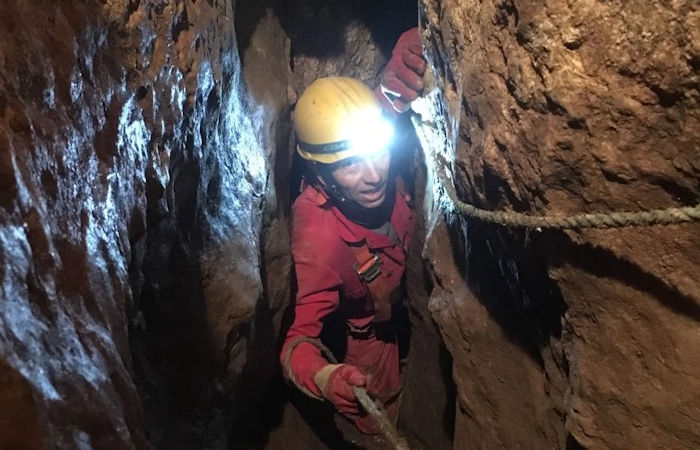Conny Waters - AncientPages.com - An international team led by archaeologists at the University of Central Lancashire (UCLan) has discovered the earliest human remains ever found in northern Britain.
Human bone and a periwinkle shell bead unearthed at Heaning Wood Bone Cave have been analyzed and dated at around 11,000 years old.
Martin Stables. Credit: UCLan
UCLan’s Dr. Rick Peterson and Ph.D. student Keziah Warburton have examined the human remains and prehistoric artifacts excavated in Cumbria’s Great Urswick by local archaeologist Martin Stables.
Dr. Peterson, a Reader in Archaeology, said: “This is a fantastic discovery! We’ve been delighted to confirm Martin’s unbelievable find dates back around 11,000 years ago and gives us clear evidence of Mesolithic burials in the north. This is particularly exciting as these are some of the earliest dates for human activity in Britain after the end of the last Ice Age.”
The enthusiast has been excavating the site since 2016 and has discovered human and animal bones, stone tools, prehistoric pottery, and beads made from perforated periwinkle shells.
The UCLan team has proven that at least eight people were buried in the cave. Despite the fragmented condition of the human remains, the accompanying artifacts make it likely that these were all deliberate burials.
Dr. Chris Jazwa and his colleagues from the University of Nevada, Reno, along with academics from Pennsylvania State University, were able to radiocarbon date seven different burials from the site.
The results show the cave was used for burials at three different periods in the prehistoric past: around 4,000 years ago in the Early Bronze Age; approximately 5,500 years ago in the Early Neolithic, and around 11,000 years ago during the very early part of the Mesolithic period.
Dr. Rick Peterson in the cave. Credit: UCLan
They discovered a date on one of the shell beads showed it was around 11,000 years old and was likely to have been used during a burial.
Martin said: “I never expected anything like the Early Mesolithic connection in my wildest dreams. After six years of digging it’s all ended up in a place I never expected it to get to. I can’t wait to hear all the final results, it’s staggering so far, difficult to imagine what it would have been like around here over 11,000 years ago.”
Earlier human remains are known from southern England and from Wales, but the destructive effect of past glaciations means that such finds are rare in northern Britain.
The shell bead discovered and radiocarbon dated to 11,000-years-old.. Credit: UCLan
Before this discovery, the ‘earliest northerner’ was a 10,000-year-old burial from the nearby Kent’s Bank Cavern discovered in 2013.
Rick added: “Cave burials like this are well known from some periods of British prehistory and the Heaning Wood burials are an important addition to our knowledge of funeral practices. Together with the slightly later dates from Kent’s Bank Cavern, it shows, as people re-occupied the land, how important the whole of Britain was to this process.”
See also: More Archaeology News
Research on the site is continuing, with a detailed study of what happened to each individual after they were placed in the cave still ongoing. Scientists from the Ancient Geonomics Laboratory, at the Francis Crick Institute have also sampled the burials to look for ancient DNA evidence which could show where the people buried in the cave came from and how they were related.
Written by Conny Waters - AncientPages.com Staff Writer







